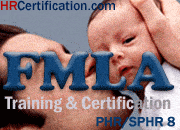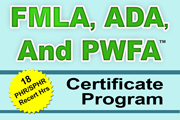
Leave Tracking Tools and Software: What HR Needs to Know Before Choosing One
10/24/2025Manual spreadsheets and shared calendars just don’t cut it anymore. Between FMLA, ADA, PWFA, and a patchwork of state leave laws, HR teams need technology that can automate compliance, track time accurately, and integrate with payroll. The right tool can transform leave administration from a high-risk, manual burden into a streamlined, transparent process. This guide compares today’s best leave tracking tools and software—what they do, how they differ, and how to choose the right one for your organization.
Why Leave Tracking Software Has Become Essential for HR
The shift from manual tracking to automated systems isn't just about convenience; it's about survival in a complex regulatory environment. The rise of overlapping leave laws like FMLA, ADA, and PWFA means a single employee absence can trigger multiple compliance obligations. Trying to manage these concurrent timelines, documentation requirements, and benefit rules on a spreadsheet is a recipe for error.
Manual mistakes, such as miscalculating FMLA entitlement or failing to document an ADA interactive process, create significant legal and financial risks. Inconsistent application of policies between employees opens the door to discrimination claims. Leave management automation solves these problems by creating a centralized, rules-based system. It ensures every request is handled consistently, every timeline is tracked accurately, and a clear audit trail is maintained, giving HR professionals the accuracy and transparency they need. This is why even small employers are abandoning spreadsheets for dedicated software.
What Leave Tracking Tools Actually Do
Modern leave tracking software goes far beyond simply marking days on a calendar. These platforms are designed to manage the entire leave lifecycle, from the initial request to the employee’s return to work.
Automate Leave Requests and Approvals
Instead of relying on emails and paper forms, employees can submit leave requests through an online portal. The software then routes the request through a pre-configured workflow, notifying managers and HR for approval. Every action is timestamped, creating a clear and defensible audit trail.
Track Leave Balances and Entitlements
The system automatically calculates and tracks leave balances based on your company’s accrual policies and legal requirements. It can determine an employee’s FMLA eligibility, track their 12-week entitlement (including for intermittent leave), and manage balances for state-mandated paid sick leave, all in one place.
Manage Documentation and Compliance
Leave tracking software serves as a secure, centralized repository for all leave-related documents. Many systems come with built-in templates for FMLA notices, medical certifications, and ADA accommodation request forms. This ensures you are using compliant language and that all sensitive medical information is stored separately from general personnel files.
Integrate With Payroll, HRIS, and Scheduling
Integration is perhaps the most powerful feature. When your leave management tool syncs with your Human Resources Information System (HRIS), payroll, and timekeeping systems, it eliminates manual data entry and reduces errors. A leave request can automatically update timesheets and ensure the employee is paid correctly, whether from their PTO bank or a disability plan.
Key Features to Look For in Leave Management Software
When evaluating vendors, focus on features that solve your biggest compliance and administrative challenges. A robust system should offer more than basic time-off tracking.
Custom Leave Categories
Your system must allow you to create and manage multiple leave types beyond simple vacation and sick days. Look for the ability to configure distinct categories for FMLA, ADA accommodation leave, PWFA leave, Workers’ Compensation, military leave, jury duty, and any specific leaves required by state law.
Configurable Approval Paths
Leave requests often require input from multiple stakeholders. A good system allows you to build custom approval workflows. For example, a simple vacation request might only need manager approval, while a complex FMLA request could be routed from the manager to HR and then to a benefits specialist.
Compliance Alerts and Reporting
This feature is non-negotiable. The software should automatically generate alerts for key deadlines, such as when an FMLA medical certification is due or when an employee is nearing the end of their 12-week entitlement. Robust reporting capabilities allow you to pull data for audits, analyze leave trends, and forecast staffing needs.
Mobile Access and Employee Self-Service
Giving employees direct access to their leave information empowers them and reduces the administrative burden on HR. Through a self-service portal or mobile app, employees should be able to check their leave balances, submit requests, and upload documentation from anywhere. This transparency builds trust and cuts down on repetitive questions.
Comparing the Top Leave Management Systems
The market for leave management software is crowded, with options ranging from all-in-one HRIS suites to standalone tools. Here’s a look at how some of the leading vendors stack up.
|
Software |
Best For |
Key Strengths |
Notable Weakness |
|
BambooHR |
Small to midsize HR teams |
Simple interface, solid time-off tracking, good user experience. |
Limited deep legal compliance tools; less robust for complex FMLA/ADA cases. |
|
UKG Ready |
Compliance-heavy organizations |
Powerful FMLA tracking, configurable workflows, strong workforce management features. |
Can be costly and complex to implement; may be overkill for simpler needs. |
|
ADP Workforce Now |
All-in-one HRIS seekers |
Seamless integration with a leading payroll and benefits ecosystem. |
The user interface can feel dated compared to newer platforms. |
|
Workday |
Large enterprises |
Deep analytics, advanced compliance features, and a unified data model. |
Very expensive and complex; not suitable or cost-effective for smaller organizations. |
|
Factorial / Gusto / Zenefits |
Small businesses (SMBs) |
Excellent ease of use, strong automation for basic leave, and affordable pricing. |
Limited customization for complex, overlapping leave scenarios. |
Integrating Leave Tracking With Compliance Systems
The true power of leave tracking software is unlocked through integration. By connecting your leave system to other core HR platforms, you create a single source of truth for all employee data. This ensures that a leave event is tracked consistently across timekeeping, payroll, and benefits administration.
When FMLA, ADA, and PWFA all apply, an integrated system can track concurrent entitlements without manual intervention. For example, it can draw from an employee's PTO bank to supplement disability pay while simultaneously reducing their FMLA leave balance. This level of automation creates audit-ready documentation that is essential for a strong legal defense.
HRIS vs. Standalone Leave Management Tools — Which Is Better?
One of the first decisions you'll face is whether to use the leave module within your existing HRIS or purchase a dedicated, standalone leave management tool.
- HRIS Advantage: Using your HRIS module keeps all your data in one place. It offers the tightest possible integration between leave, payroll, and employee records, providing a holistic view of your workforce.
- Standalone Advantage: Best-of-breed standalone tools often have more advanced, specialized features for complex leave scenarios like ADA and intermittent FMLA. They are typically updated more frequently to keep pace with new laws and can be simpler and faster to implement.
The right choice depends on your organization's size and complexity. A small business with straightforward leave policies may be well-served by its HRIS. A large, multi-state employer with complex union rules and a high volume of overlapping leave cases will likely benefit from a specialized standalone system.
Red Flags When Evaluating Leave Tracking Vendors
As you demo different products, be on the lookout for potential warning signs. A vendor might have a flashy interface, but it's the underlying functionality that matters for compliance.
- No Built-in Compliance Alerts: If the system can't automatically flag key FMLA deadlines or state-specific requirements, it’s little more than a digital calendar.
- Poor Customization: The system should be flexible enough to handle your unique policies and the nuances of ADA or PWFA accommodation tracking, which are rarely one-size-fits-all.
- Limited Reporting: If you can't easily export data to analyze leave trends or prepare for an audit, the software's value is significantly diminished.
- Hidden Costs: Be wary of vendors who charge extra for essential integrations, premium support, or adding more leave types. Ask for a clear, all-inclusive pricing structure upfront.
Implementation Tips for a Smooth Rollout
Choosing the right software is only half the battle. A successful implementation is critical for user adoption and achieving a return on your investment.
- Involve Key Stakeholders: Include representatives from HR, payroll, IT, and legal in the selection and implementation process to ensure the tool meets everyone's needs.
- Train Your Managers: Managers are on the front lines of leave administration. Provide thorough training on how to use the system to approve requests and access team calendars.
- Pilot the Program: Before a company-wide rollout, test the software with a single department. This allows you to work out any kinks in the configuration and gather feedback.
- Communicate with Employees: Clearly explain the benefits of the new system, such as self-service access and faster approvals. Provide simple guides and resources to help them get started.
The ROI of Modern Leave Tracking Systems
Investing in leave management software delivers a tangible return by mitigating risk and improving efficiency. The primary benefits include:
- Reduced Legal Risk: Automated compliance checks and documentation significantly lower the risk of costly FMLA, ADA, and PWFA violations.
- Increased HR Efficiency: Automating manual tasks frees up your HR team to focus on strategic initiatives instead of administrative paperwork.
- Better Data for Decision-Making: Accurate reporting provides insights into absenteeism, leave trends, and potential staffing gaps.
- Improved Employee Experience: Transparency and self-service capabilities build employee trust and reduce frustration with the leave process.
Compare Top-Rated Leave Management Tools
The right software can simplify compliance, reduce administrative work, and keep your team audit-ready. In a world of complex and overlapping leave laws, it’s an investment you can’t afford to skip. Explore and compare the best leave tracking systems to find the one that fits your organization’s needs. Compare top-rated leave management tools now.




When multiple leave laws apply to the same employee, HR has to play compliance chess. The FMLA, ADA, and now the PWFA each have distinct rules—but they often overlap in real-world situations. Understanding where these laws intersect helps prevent violations, lawsuits, and employee relations issues. This guide walks you through how to handle overlapping leave laws step by step, so you can coordinate job protection, accommodations, and pay rules without risking compliance errors.
...Managing employee leave isn’t just paperwork—it’s compliance, communication, and compassion rolled into one. Whether it’s FMLA, ADA, or the PWFA, HR teams are expected to navigate overlapping laws, document every step, and protect both the organization and the employee. This guide breaks down the basics of leave management in HR, helping you understand the legal framework, streamline your process, and train your managers for consistent, compliant results.
...



